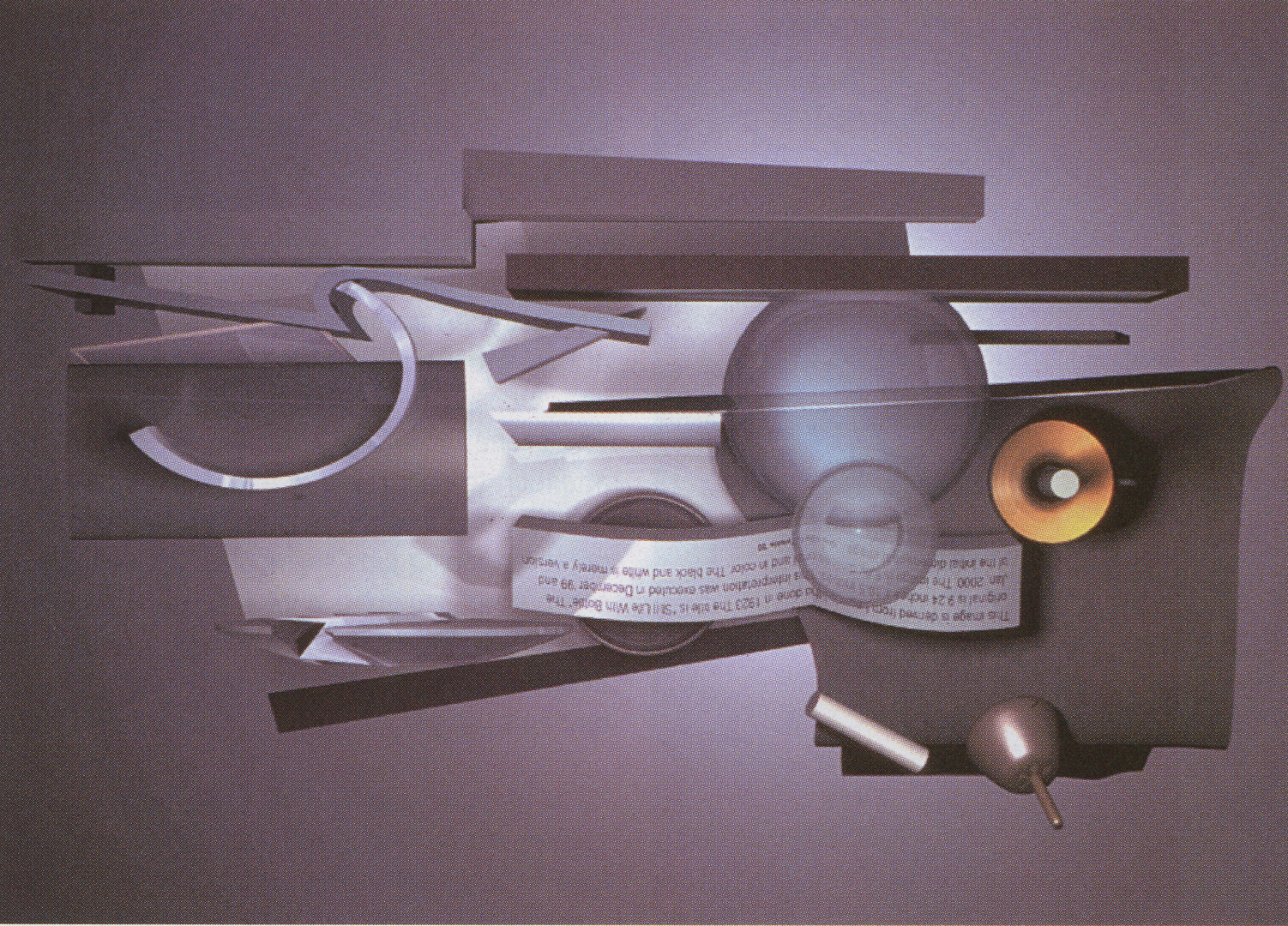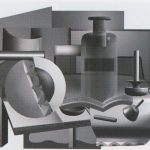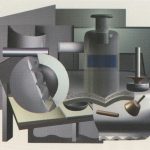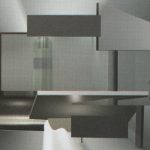E. Tulchin: Léger Reconstructed (Overhead View)
Artist(s):
Title:
- Léger Reconstructed (Overhead View)
Exhibition:
Creation Year:
- 2002
Medium:
- crystal print
Size:
- 20 x 24 inches
Category:
Keywords:
Artist Statement:
There supposedly was an exchange of letters between Leonardo and Michelangelo wherein Leonardo asserted that painting was the superior art form, because Michelangelo could not sculpt fog. Michelangelo’s retort was that only when Leonardo could walk behind the painting would he agree!
Can we now have our cake and eat it too? Computer graphics and 30 imaging suggest that it might be so. To that end, I decided to explore the possibility of looking at the other side(s) of a painting.
I have long been sympathetic to the Cubist movement and particularly to the work of Fernand Léger. Central to the idea of Cubism is the notion of multiple views changing over time and condensed into a single image. (Duchamp’s Nude Descending a Staircase is a good example). I was quite curious as to what would happen to a “decompressed” and then “reconstructed” Cubist work. What would it lead to? Would it still be Cubist? Would it still hold together? And, finally, would it validate the rather abstract ideas of Cubism and yet be a substantive and independent work of art?
What you see is my attempt to answer those questions. The work that was “processed” was a 1923 pencil drawing by Léger: Still Life With Bottle.
Technical Information:
Léger’s drawing is rather straightforward, for a Cubist piece, but it does require some analysis as to the meaning of each element. After analyzing what each item “is,” it was modeled within the computer in 30 space with the same sense of weight, volume, emphasis, opacity, surface, dimension, etc. It simply became a matter of observation, construction, texturing, lighting, and placement. The fully dimensional items were all assembled to match the drawing, but the camera was placed a great distance away with a field of view of less than 10 degrees. This telephoto lens collapsed the sense of depth so that the perspective in the “front” view was as “flat” as the drawing. Thereafter, with a normal lens on the camera, I moved around the still life: overhead, three-quarter, behind, etc.
Further, I realized that it should now be possible to view the scene stereoscopically. In consultation with stereoscopic imaging expert Gerald Marks (www.pulltime3d.com), I was able to render the appropriate left and right eye views. Marks combined these views to produce anaglyphs: stereo images that can be viewed with red/blue glasses. The anaglyph process has been used to view stereo for a I most 150 years but has found renewed utility in digital multimedia and for the Web. We are also planning to utilize other methods of stereoscopic display, including lenticular, vectograph, polarizing projection, shutter glasses, and holography.
Process Information:
Traditionally, the working artist has always been concerned with the physical as well as the visual quality of the final product. Though 3D computer graphics has been resolution-independent for quite a while, there has not been, until relatively recently, a suitable way of getting one’s work out of the box and up on the wall. Maintaining, in the printed image, the richness of the colors, textures, and lighting effects that are now part of 3D packages is a formidable challenge. The recent introduction of archival photographic printing of high-end digital files now permits an affordable quality solution. The exhibited print is a KRIST’L Fine Art Archival Print by NancyScans of Chatham, New York.
Other Information:
Images:
1: The Bottle, 1923, 9.25 x 10.5 inches, pencil drawing; Collection Curt Valentin Gallery, New York
2: Three-quarter view
3: Front view black-and-white
4: Front view
5: Rear view










